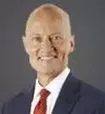Happy Veterans Day to all who served in the military—whether in combat or not, overseas or state side, officer or rank and file, or in any other capacity. We owe you our respect and gratitude. In the United States, Veterans Day is a federal holiday observed on November 11 every year. In addition to honoring veterans for their service, Veteran's Day also offers the opportunity to reflect on employment challenges facing veterans and what employers can do to improve opportunities to those who have served.
Employers take note: there are currently nearly 20 million veterans in the United States, and nearly 250,000 individuals transition out of military service back into civilian life every year. Many of these individuals leave military service with the intent and desire to return to and thrive in civilian life, including the private workforce. Yet studies also show that many veterans remain underemployed in relation to their education, training, and skills. Notably, underemployment of veterans has increased in recent years. A 2010 study found that 11 percent of employed veterans were underemployed, but, by 2019, veterans' underemployment had grown to 34 percent.
Given these statistics, what can employers do to provide veterans with a robust opportunity for employment commensurate with their skills and abilities? Despite an ongoing, tight labor market in which many employers struggle to find, hire, and retain talented and committed workers, employers might not be fully utilizing the pool of talent comprised of military veterans. Employers that thoughtfully formulate and implement a strategic approach to hiring and employing veterans may be able to achieve a competitive advantage in the marketplace.
The Benefits of Hiring Veterans
Hiring and successfully employing veterans goes beyond patriotism—it may also be good business. Employers can derive many benefits from implementing a strategy to hiring veterans. During their military training and service, many veterans learned skills and characteristics that employers typically seek, such as job skills, team work, loyalty respect for organizational structure and hierarchy, discipline, commitment, leadership experience, and more.
Our recent Ogletree Deakins podcast, "Insights for Hiring and Employing Veterans: An Interview With Thought Leader, Sean Kelley," provides further insights on this topic from an industry leader, Sean Kelley. In this podcast, Kelley discusses the negative and positive stereotypes that can become impediments for veterans. Negative biases can include generalizations about veterans lacking technical skills and the empathy and emotional intelligence required for success in certain professions.
Kelley, who emphasizes that veterans are a diverse group, urges employers to consider implementing a veterans hiring program as an integral part of a company's overall diversity, equity, and inclusion (DEI) strategy. Kelley also warns of the dangers of labels and accompanying biases that are well intended. For example, references to all veterans as "heroes" might create unrealistic expectations about team members, fuel or trigger "imposter syndrome," and narrow an employer's view of the employee as a "run-through-the-wall" task completer when they might have strong strategic skills or capacity for leading others.
Supporting a Veteran Workforce
No doubt, veterans are a diverse group of individuals. Some may have physical or mental health challenges as a result of their military service. Strategic employers may want to plan how to be proactive in addressing these issues in a way that helps veterans manage their challenges and thrive in the workforce. Moreover, because some veterans may be suffering those challenges in silence, employers with a proactive mindset may be able to support veterans and unlock their full potential.
The Equal Employment Opportunity Commission published in late 2020 "Veterans and the Americans with Disabilities Act: A Guide for Employers." Among other things, the guide lists "specific steps employers may take to recruit and hire veterans with disabilities" and provides a list of resources employers can access for the recruiting and hiring of veterans, such as, the Employer Assistance and Recruiting Network (EARN).
Next Steps for Employers
Where does an employer start? A few internet searches can lead employers to federal and sometimes state level programs and resources that are helpful for accessing job seekers who are veterans. But, in addition to those hiring mechanics, Kelley suggests employers first look to their current workforces to help formulate a veterans strategy and foster a supportive culture. Many employers currently employ veterans without even knowing it because of some veterans' reluctance to share that information. Employers that know and actively support their current employees who are veterans may have a leg up in determining what works for veterans in their company and how to leverage this strength in the hiring market.
In addition to taking these steps, employers can also create internal groups to raise awareness of veterans' issues in the workplace. On Veterans Day 2022, Ogletree Deakins launched its newest resource group—focused on military veterans—to not only create camaraderie and pier support among employees with shared experiences but to also serve as a source of information to dispel conscious and unconscious biases that may impede the success of the workforce. Hopefully, such groups can also refine and implement strategies for hiring and employing veterans in new and better ways.
The content of this article is intended to provide a general guide to the subject matter. Specialist advice should be sought about your specific circumstances.

